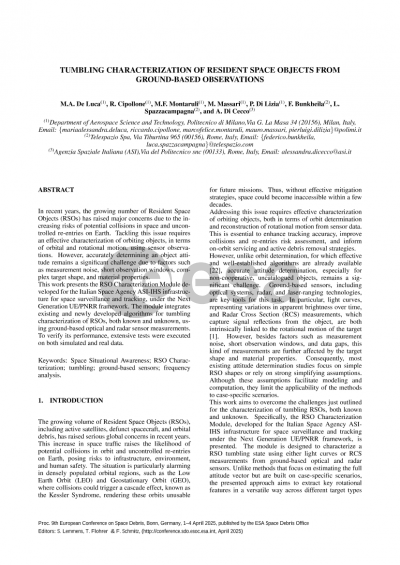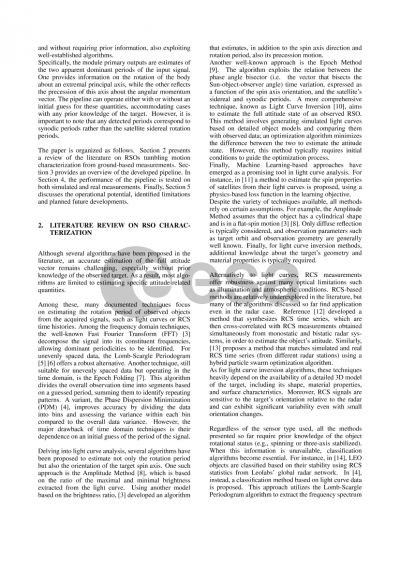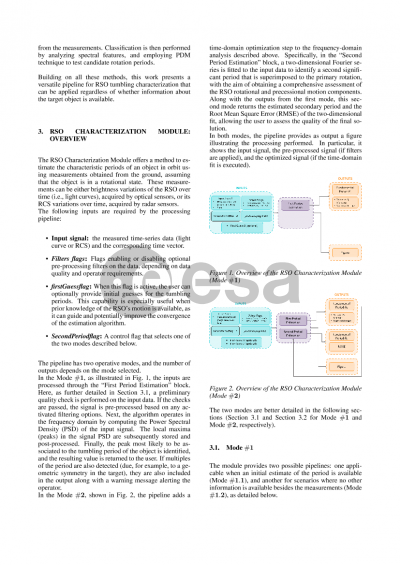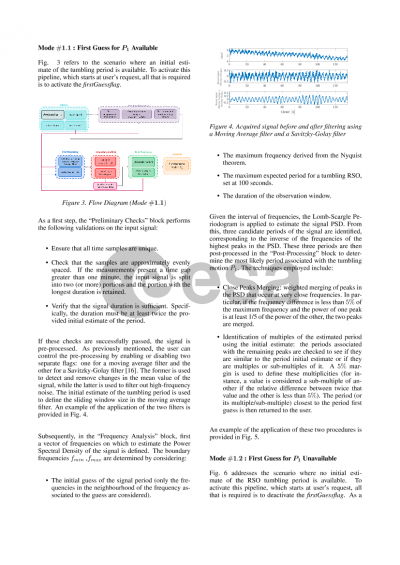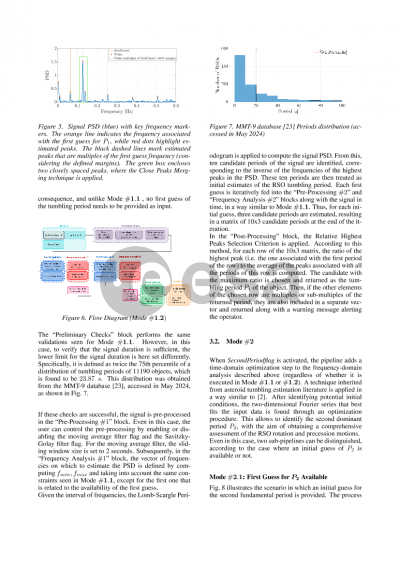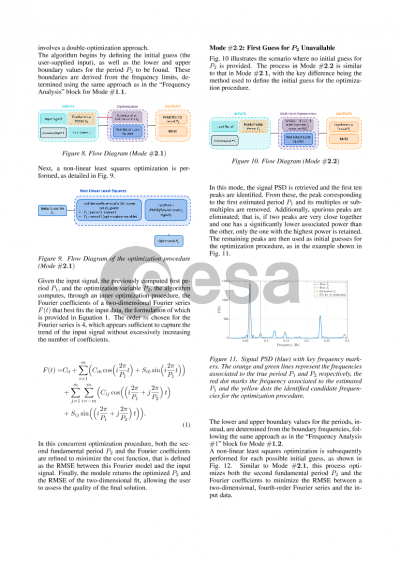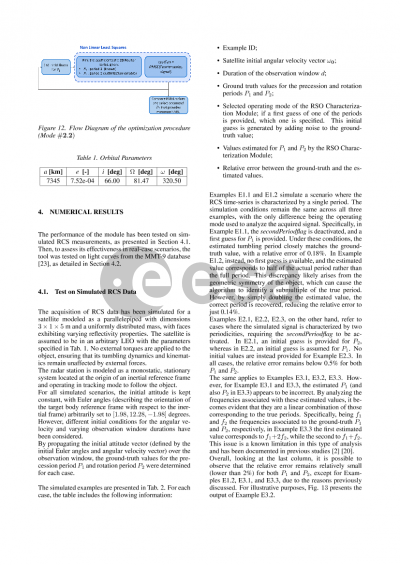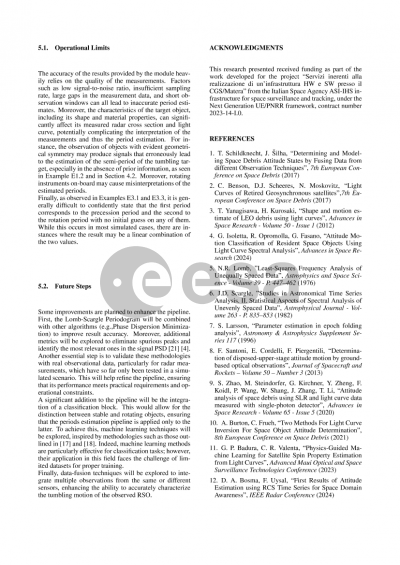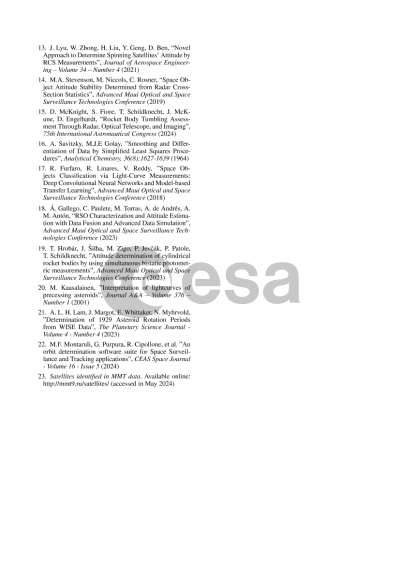Document details
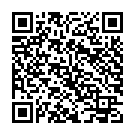
Abstract
In recent decades, the growing volume of Resident Space Objects (RSOs) is raising serious global concerns due to the increasing risks of potential collisions in space and uncontrolled re-entries on Earth. Addressing this issue requires effective characterization of orbiting objects, both in terms of orbit determination and reconstruction of rotational motion from sensor data. This is essential to enhance tracking accuracy, improve collisions and re-entries risk assessment, and inform on-orbit servicing and active debris removal strategies.
However, accurately determining the attitude, especially for non-cooperative, uncatalogued objects, is a significant challenge due to factors such as measurement noise, short observation windows, and data gaps; moreover, measurements are further affected by the target shape and material properties. Consequently, most existing attitude determination studies focus on simple RSO shapes, such as rocket bodies, or rely on strong simplifying assumptions.
This work introduces the RSO Characterization Module developed for the Italian Space Agency ASI-IHS infrastructure for space surveillance and tracking, under the Next Generation UE/PNRR framework. The module is designed to characterize a RSO tumbling state using either light curves or radar cross-section measurements from ground-based optical and radar sensors. Unlike methods that focus on estimating the full attitude vector but are built on case-specific scenarios, the presented approach aims to extract key rotational features in a versatile way across different target types and without requiring prior information, also exploiting well-established algorithms.
Specifically, the module primary outputs are estimates of the two apparent dominant periods of the input signal. One period provides information on the rotation of the body about an extremal principal axis, while the other reflects the precession of this axis about the rotational angular momentum vector. The pipeline can operate either with or without an initial guess for these periods, accommodating cases with any prior knowledge of the target.
To do that, the processing pipeline begins with preliminary checks to verify the quality of the measurements. Then, the signal is pre-processed to detrend it and filter out high-frequency noise. The Power Spectral Density (PSD) of the signal is estimated through the Lomb-Scargle Periodogram and the local peaks in the PSD are identified and post-processed, such that the peak most likely to be associated to the first dominant period is returned to the user. If multiples of the returned period are also detected (due, for example, to a geometric symmetry in the target), they are returned along with a warning message alerting the operator.
Next, a technique inherited from asteroid tumbling estimation literature is applied. After identifying potential initial conditions, the two-dimensional Fourier series that best fits the input data is found through an optimization procedure. This allows to identify the second dominant period, with the aim of obtaining a comprehensive assessment of the RSO rotation and precession motions.
The performance of the module has been tested on simulated measurements, generated assuming both gyroscopic and asymmetrical targets. Operational potential and limitations were identified, particularly in cases where symmetry impacts the accuracy of the characterization. Finally, to assess the tool in real-case scenarios, light curves from the MMT-9 database have also been included as part of the testing campaign.
Preview
